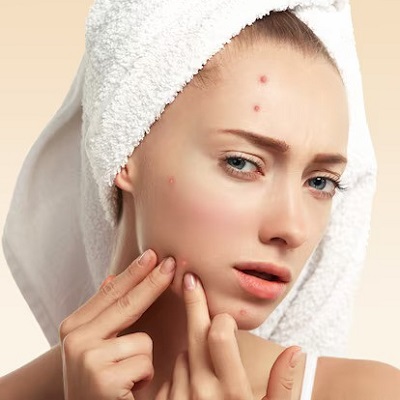Acne scars in Islamabad can be a frustrating reminder of past breakouts, impacting self-esteem and confidence. Fortunately, modern skincare and dermatology offer various treatments designed to reduce the appearance of acne scars and restore smooth, even skin. This blog will explore some of the best treatments for acne scars, highlighting their benefits, effectiveness, and suitability for different skin types. Whether your scars are shallow or deep, there’s likely a treatment that can help rejuvenate your skin.
1. Chemical Peels:
Chemical peels use acids like glycolic, salicylic, or lactic acid to exfoliate the skin, removing dead cells and encouraging the growth of fresh, healthy skin. Peels are available in different strengths:
- Superficial peels are suitable for mild scars and can improve skin texture with minimal downtime.
- Medium to deep peels penetrate further, helping treat more severe scars and uneven pigmentation. However, they may require some recovery time.
Benefits of Chemical Peels:
- Help reduce surface-level scars and improve skin tone.
- Non-invasive with minimal recovery for lighter peels.
- Effective for various skin types when selected correctly.
Considerations:
- Multiple sessions are often needed for optimal results.
- May cause redness, sensitivity, or peeling initially.
2. Microneedling:
Microneedling involves tiny needles that puncture the skin, stimulating collagen production and promoting the healing of scar tissue. Also known as collagen induction therapy, microneedling can be particularly effective for deeper acne scars.
Benefits of Microneedling:
- Improves texture, tone, and elasticity by promoting collagen production.
- Can target specific areas of the face with precise control.
- Minimal downtime, with most people returning to daily activities the following day.
Considerations:
- Several sessions are generally recommended for visible results.
- Temporary redness or swelling can occur post-treatment.
3. Laser Therapy:
Laser treatments are among the most advanced options for treating acne scars. There are two main types:
- Ablative lasers remove the top layers of skin to reveal smoother layers underneath, suitable for deep scars.
- Non-ablative lasers stimulate collagen without removing layers of skin, ideal for mild to moderate scars.
Benefits of Laser Therapy:
- Precision targeting for both shallow and deep scars.
- Long-lasting results with a tailored approach for different scar types.
- Encourages collagen growth and smoothes out uneven skin texture.
Considerations:
- More intense lasers may require downtime and can be more expensive.
- Multiple treatments are often required, and results may take time to fully develop.
4. Dermal Fillers:
For those with deeper, pitted scars, dermal fillers provide a quick, non-surgical option. Fillers such as hyaluronic acid are injected directly into scars to smooth out skin texture and improve overall appearance.
Benefits of Dermal Fillers:
- Immediate results with little to no downtime.
- Minimally invasive, requiring only injections.
- Can be combined with other treatments for comprehensive results.
Considerations:
- Results are temporary and usually last between 6-12 months.
- Ideal for those with isolated or deep, depressed scars rather than widespread scarring.
5. Platelet-Rich Plasma (PRP) Therapy:
PRP therapy is a regenerative treatment that uses your body’s natural healing abilities. Platelets from your blood are concentrated and injected into the skin to promote healing and stimulate collagen production. It is often combined with microneedling for enhanced results.
Benefits of PRP Therapy:
- Uses natural ingredients from your own body, reducing risks of side effects.
- Encourages tissue repair and skin rejuvenation.
- Suitable for those who prefer a more natural approach to skincare.
Considerations:
- May require multiple sessions for optimal outcomes.
- Results can take a few weeks to become noticeable.
6. Subcision:
Subcision is a minor surgical procedure where a needle is inserted under the skin to break up the scar tissue that tethers scars to deeper layers of skin. This allows the scar to rise and smoothen out the surface.
Benefits of Subcision:
- Particularly effective for rolling or boxcar scars.
- Long-lasting effects as the skin naturally heals and fills in the scarred area.
- Can be used alongside other treatments for more comprehensive results.
Considerations:
- Minor bruising and swelling may occur initially.
- Suitable for specific types of scars but may not be ideal for all.
7. Topical Retinoids and Other Skin Products:
Topical treatments, including retinoids and peptides, are a more gradual approach to treating acne scars. These products encourage cell turnover, boost collagen, and help reduce the appearance of scars over time.
Benefits of Topical Treatments:
- Non-invasive and easy to incorporate into daily skincare.
- Affordable and effective for mild scarring.
- Can be used in conjunction with in-office treatments for enhanced results.
Considerations:
- Results take time and may be subtle, depending on scar severity.
- Consistent use is necessary to see improvement.
Choosing the Right Treatment:
Selecting the best treatment for acne scars depends on your skin type, the type of scars you have, and your budget. Consulting with a dermatologist can help tailor a treatment plan to your unique needs. Additionally, combining treatments, such as microneedling with PRP or chemical peels with laser therapy, often yields the most dramatic results.
Conclusion:
With the variety of treatments available today, acne scars no longer have to be a permanent part of your skin. Whether you opt for a minimally invasive approach like microneedling or a more intensive option like laser therapy, professional treatments can significantly improve your skin’s texture and tone. Always consult with a skincare professional to find the most effective treatment plan for your skin, and look forward to a future with renewed confidence and a rejuvenated complexion.
For more information visit Dynamic Clinic PK





Comments